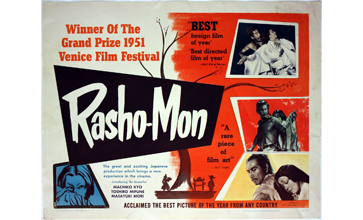You May Be Listening for the Customers — But Are You Hearing Them?
Perspective is a funny thing. Ask five people to recall the same event, and you might get five completely different stories in return. When a customer called with a problem, were you able to provide the solution they needed, with minimal hassle and effort on their end? If we asked them, would they agree? Did you follow the script? And if so, is that what the customer needed in that particular situation? What if your manager has one impression of your performance, and the customer has a completely different impression?
According to Lee Resources International, 80% of companies claim to deliver “superior” customer service…yet only 8% of customers are inclined to agree.
Have a look at the graph below. In this scenario, NICE observed the contact center performance across a sampling of its Voice of the Customer clients. Yellow (“Call Quality”) illustrates the performance of agents in each of four quartiles, from best-performing to worst, as determined by internal call monitoring protocols. Green (“Agent Satisfaction,” or “Agent Sat”) illustrates agent performance as determined by the customers themselves.
What this illustrates is the inherent difficulty of reconciling different perspectives. In Quartile 1, agents would seem to be overachieving; the customers themselves give them more credit for an excellent experience than the organization does. On the other hand, looking at subsequent quartiles (especially those laggards in Quartile 4), the organization appears to underestimate just how dissatisfied customers can be with their experience.
But how to make progress from this position? If there’s a certain element of “he says, she says” at play, what steps can a CX-minded organization take to make its customer service less like Rashomon, and more like…well…what the customer expects and demands?
In a recent report, “Anchor Your CX Strategy in Customer Understanding,” Forrester posits that comprehending customer motivations—not merely the “what” and “how” of their behavior, but the “why,” as well—is a critical cornerstone of any effective CX program.
Reading the report, one might deduce that structured, closed-ended mechanisms for measuring customer experience have a finite value, and that such limitations must be accounted for as they apply to CX strategy: “While surveys are great for assessing customers’ attitudes in response to well-defined questions, they’re not enough to break the status quo feedback loop and gain insight into what customers are actually missing in an experience.”
Worth considering, however, is the value of another channel for measuring customer experience—one that is already out there in the open, just waiting to be exploited by the adventurous CX professional:
- According to Zendesk, 30% of customers share positive reviews of goods and services via social media, and 45% share negative reviews.
- According to The Touch Agency, over one million people view tweets about customer service each week, and roughly 80% of those tweets are negative or critical in nature.
- Forrester’s report asked CX professionals the following question: “What types of customer research and feedback, if any, influence the development of your firm’s customer experience strategy and/or vision?” The greatest disparity between those who believed their CX program to be extremely or moderately effective, and those who believed their CX program to be slightly or not at all effective, was observed when it came to their regard for “unsolicited feedback (e.g., social media, emails).” Effective CX programs were nearly twice as likely to incorporate said feedback into their strategies.
In simple terms, this means a considerable segment of consumers are expressing their opinions, on their own terms, constantly…and the most successful CX programs are listening to those voices.
To learn more about how you can gain an essential understanding of your customers, and be sure to join our webinar presentation, “Know Thy Customer: Transforming Insight into Effective CX Strategy,” on May 11.



